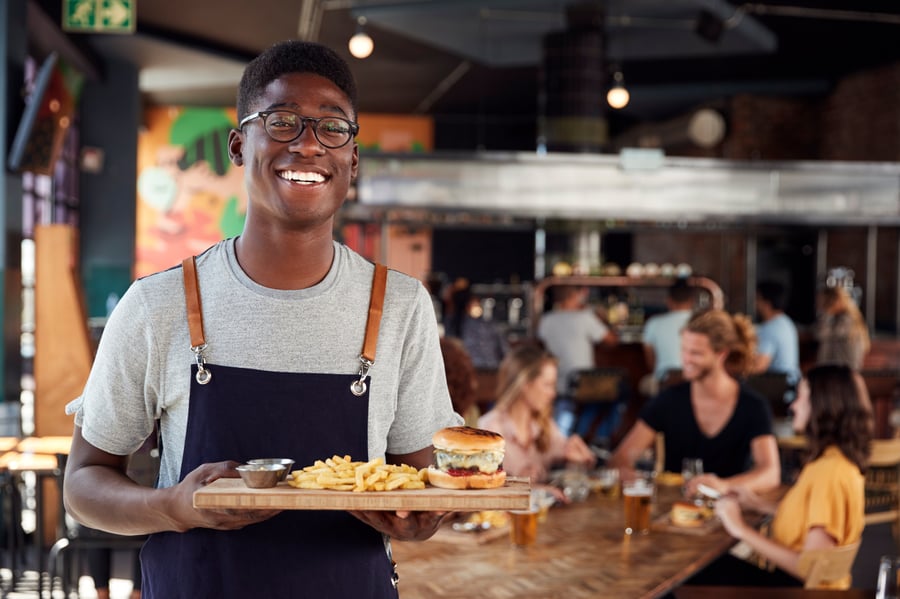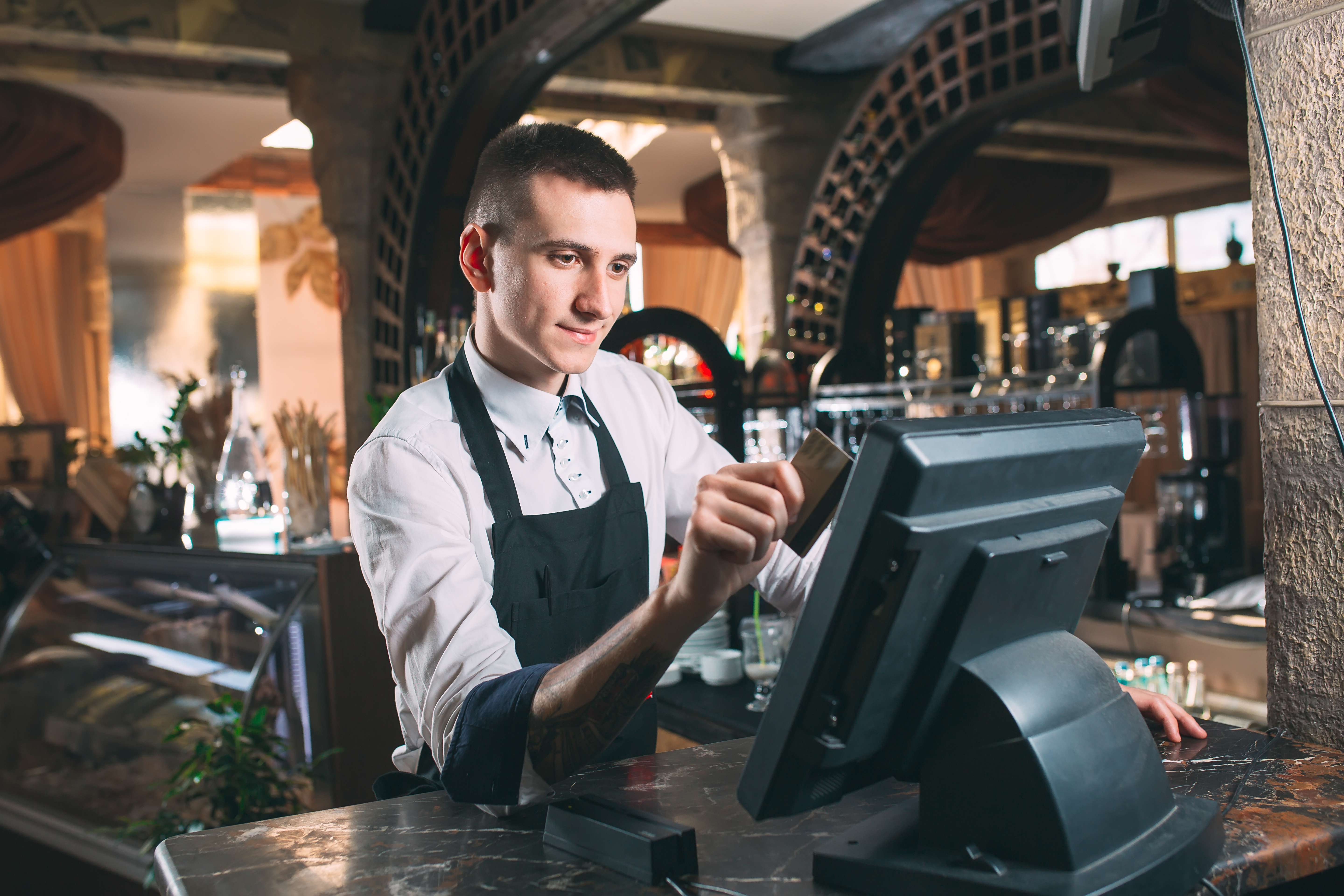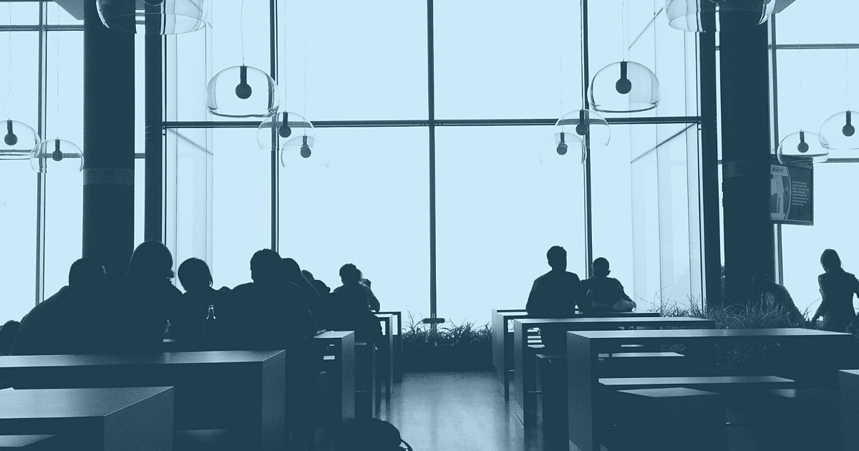How To Improve Your Restaurant’s Table Turnover: The Ultimate Guide
Restaurant
For restaurant operators increasing table turnover rate is essential for improving profitability. More turnover means more revenue, yet you don’t want to rush guests and ruin their experience. And as many operators struggle with a labor shortage, optimizing your staff operations to increase turnaround with minimal labor is more critical than ever.
In this blog post, we'll discuss how to effectively improve your table turnover rate without compromising the quality of your guests' dining experience or straining your staff. To make it easier to understand, we’ve broken it out into three categories: restaurant design/environment, staff operations, and technology. We’ll also explain how to understand and calculate your table turnover rate and related metrics.
With table turnover, time is money… so let’s go!
What is Table Turnover Rate?
Table turnover rate is a key metric used in the restaurant industry to measure the efficiency of a restaurant's operations. It refers to the number of times a table is used in a given period, typically an hour. The higher the table turnover rate, the more efficient the restaurant is at serving customers and generating revenue.
A high table turnover rate can also help to reduce wait times for customers and increase overall customer satisfaction. However, it's important to strike a balance between table turnover rate and quality of service, as rushing customers through their meal can negatively impact the dining experience.
Seat turnover rate
Seat turnover rate is similar to table turnover rate, but it measures the number of times a seat is occupied in a given time period. It takes into account the number of seats per table and measures how efficiently a restaurant is utilizing its seating capacity. Like with table turnover, the higher the seat turnover rate, the more efficiently a restaurant is serving customers and utilizing its seating capacity. By monitoring and improving seat turnover rate, restaurants can increase their revenue and improve customer satisfaction by reducing wait times and providing better service to customers.
Table turnaround time
Table turnaround time refers to the amount of time it takes for a restaurant to prepare a table for a new guest after the previous guest has finished their meal and left. This includes cleaning and sanitizing the table, resetting it with clean utensils and tableware, and ensuring that everything is in order for the next guest's arrival. A quick table turnaround time is a critical prerequisite for improving your overall table turnover rate.
How to Calculate Restaurant Table Turnover
Table turnover rate is calculated by dividing the number of tables occupied by customers during a certain period of time (such as one hour) by the total number of tables in the restaurant. For example, if a restaurant has 20 tables and serves 80 customers in one hour, its table turnover rate would be 4 (80 divided by 20). A higher table turnover rate means that the restaurant is serving more customers and generating more revenue.
What is the average table turnover rate?
The average table turnover rate can vary widely depending on the type of restaurant, location, and other factors. However, in general, a good table turnover rate for a full-service restaurant is considered to be around 2-3 times per hour during peak hours. This means that each table is occupied by customers for an average of 20-30 minutes before being cleaned and reset for the next guests. However, it's important to note that this is just a general guideline and the optimal table turnover rate can vary depending on the restaurant. For instance, a high-end restaurant which makes money on upselling drinks and desserts will have a lower table turnover rate, and that’s perfectly suitable for that type of restaurant.
Table turnover rates for fast casuals
For fast-casual restaurants, which typically have faster service and quicker meals than full-service restaurants, the average table turnover rate may be higher. A good table turnover rate for fast-casual restaurants is generally considered to be around 4-5 times per hour during peak hours. This means that each table is occupied by customers for an average of 12-15 minutes before being cleaned and reset for the next guests. However, as with full-service restaurants, the optimal table turnover rate for a fast-casual restaurant may vary depending on the specific circumstances and goals of the business.
Table turnover is important for fast casual restaurants as it directly impacts the restaurant's ability to serve as many customers as possible during peak hours. Fast casual restaurants typically have a limited number of tables available, so it's important to ensure that these tables are being used as efficiently as possible. With faster service and quicker meals, customers at fast casual restaurants are more likely to expect a higher table turnover rate than those at full-service restaurants.
Table turnover rates for QSRs
QSRs (Quick Service Restaurants) are known for having very fast service times, so their table turnover rate is much higher than that of full-service or fast-casual restaurants. The average table turnover rate for QSRs can vary widely depending on the specific restaurant and location, but generally, a good table turnover rate for a QSR is considered to be around 6-8 times per hour during peak hours. This means that each table is occupied by customers for an average of 7.5-10 minutes before being cleaned and reset for the next guests. However, it's important to note that the optimal table turnover rate may vary depending on the specific circumstances and goals of the QSR.
Despite their reputation for fast service and quick meals, table turnover rate is still an important factor for QSRs. Although customers at QSRs may not typically linger as long as those at full-service or fast-casual restaurants, a high table turnover rate still allows the restaurant to serve more customers and generate more revenue during peak hours. And with limited seating available in most QSRs, a high table turnover rate ensures that all customers have a chance to sit and enjoy their meals.
12 Ways to Improve Your Restaurant’s Table Turnover Rate
Design
Achieving a good table turnover rate begins before in the restaurant’s environment. No matter how efficient your processes become, if your restaurant makes people want to linger and relax and you’re making your profits on volume, you will be fighting an uphill battle. Design a menu and environment which encourages turnover and efficiency, while balancing it with providing the best experience for guests.
Optimize dining room layout
Dining room layout has a big impact on operational efficiency and table turnover. A well-designed layout ensures that tables are placed strategically to maximize the use of available space, while still providing comfortable seating for customers.
For example, placing tables closer together or using communal seating can increase the number of customers that can be seated at any given time. Depending on the type of restaurant, bar or counter seating may make sense, so customers can be seated temporarily as they wait for a table. Additionally, arranging tables in a way that allows staff to easily move between them can help to streamline service and reduce wait times.
Adjust decor and atmosphere
In addition to the dining room layout, other environmental factors in your restaurant can improve your table turnover rate. These include the music, temperature, color scheme, and seating.
Music. Louder music with a faster, upbeat rhythm will encourage customers to eat faster. Studies have shown people eat faster when fast tempo music is playing in the background.
Colors. Bright colors that are close to the primary colors (red, yellow, and blue) are more exciting than softer tones. Warm colors such as reds, yellows, and oranges are the most stimulating to guests, but they will also inhibit guests from relaxing as much and can be irritating after some time, so they’re ideal for high-volume establishments. There’s a reason QSRs tend to use this type of color scheme. However, because bright colors can be overwhelming, don’t overdo it, and make sure the colors make sense with the rest of your brand.
Temperature. The ideal dining room temperature is between 69 and 72 degrees Fahrenheit, but lowering the temperature can encourage customers to eat faster.
Furniture. Comfortable booths and big soft chairs will encourage diners to stay longer. Balance comfort with the need to turn tables. Diners stay longer in booths, so limit their number if you want to increase turnover. Placing the tables in the center instead of the corners will keep customers alert, because of the frequent foot traffic going past them. Unless your primary demographic is large parties, doing away with large tables can allow you to seat more parties at once.
Limit menu size
Large menus slow down service. They add complexity that creates longer ticket times in the kitchen and slow down ordering because guests have a harder time making decisions. And thanks to ‘the paradox of choice,’ guests are often less satisfied with large menus, as they can cause extra stress in making a decision (decision fatigue) and dissatisfaction as they second guess the choice they do end up making.
One way to avoid this is to limit your menu size (which can also help in minimizing food waste and lower prime costs in general). Restaurants with small menus have become increasingly popular, while major fast casual and QSR chains have been cutting back on menu options in the past few years. By making choice easier for customers, and streamlining operations, smaller menus help increase table turnover.
If a guest still has a hard time choosing, instruct your staff to encourage items which are faster to prepare – a classic tactic to flip tables more quickly.
Prep certain items ahead of time
No matter the type of restaurant, restaurant staff are busy with myriad everyday tasks to keep operations going. Whenever possible, preparing certain menu items in advance can help save time for staff and prevent them from becoming a bottleneck during busy times.
This can be filling up dispensers or ramekins with popular sauces and dressings, preparing water pitchers or dispensers in advance, or partially preparing popular menu items. Just be sure that it’s done in a way that doesn’t negatively affect the quality of the food or food safety.
Staff Operations
If you’re running a restaurant where guests are seated and served by your staff, every staff member (and how they work together) plays an important role in your operational efficiency. Improve your table turnover by training your FoH staff such as hosts, servers, bussers, and cashiers to run like a fine-tuned, well-oiled machine.
Train your front of house staff to be more efficient
Establish processes and timelines to ensure the staff is efficient and is able to seat guests faster. As many restaurants are short-staffed, efficiency takes on a whole new importance. Here are some best practices that your FoH staff should be trained to follow:
- Greet guests and hand them the menu as soon as they’re seated.
- Take orders within 2-3 minutes (or even one minute) of a guest being seated.
- Consolidate visits to a single table to avoid spending time going back and forth.
- Prepare the check in advance and leave it for guests before they’re finished (while making it clear you’re not rushing them out the door).
- Clear tables within 1-2 minutes after guests leave.
Assign specific duties to staff, while encouraging them to work as a team
For your machine to work smoothly, all staff members must know their specific duties. Hosts need to keep an eye on waiting customers to assign them a seat as soon as one is available. Bussers must clear tables as soon as guests are finished and provide silverware for the next party. Expediters need to time meals carefully, while servers need to handle everything that gets thrown at them.
However, you need to also walk a balance between rigid roles and empowering your staff, especially servers, to help where needed. Rather than having rigid sections, allowing any server to help any customer, with all orders and tables tracked in one POS system shared by all servers, allows guests to be helped more quickly.
Don’t seat incomplete parties
Serving an incomplete party can create a big bottleneck and hurt your table turnover rate – guests occupy the table as they wait for the rest of their party to arrive, and staggering order taking can throw off every step for your staff, creating even more delays.
To avoid this, enforce a policy refusing to seat incomplete parties during busy shifts. This has become an increasingly common policy for restaurants. During slower shifts and non-peak hours, you can relax the policy as the need for max efficiency is less important.
Technology
Adopting current technologies can also do a lot to improve the coordination of your staff; for instance, adopting kitchen digital display screens tied to a single ordering system that allows both FoH and BoH to see every order and its current status. New technologies can also help streamline tasks such as guest payment, leading to quicker guest turnaround.
Mobile POS systems
POS systems are critical technological systems for any restaurant. If you’re using a payment terminal in a fixed location, servers need to make trips back and forth to process transactions. That’s why many table service restaurants are adopting mobile payment terminals that can be moved freely throughout the restaurant. Orders can be sent to the kitchen faster and payment can be completed right at the table, minimizing diner downtime and improving table turnover.
Contactless payments
In addition to mobile POS devices, contactless payment options are another way to speed up diner payment. Many restaurants adopted these during the COVID-19 pandemic, and there’s a good chance you’ve already done so as well. Contactless payments include mobile wallets and new contactless credit or debit cards. Customers simply hover their card or smartphone over the reader to pay, without needing to insert a card, use a PIN pad, or sign a receipt.
According to the Smart Card Alliance, contactless transactions are 63% faster than cash and 53% faster than traditional credit cards. With Visa’s contactless credit cards, transactions take as little as half a second to process. Speeding up checkout means faster table turnover rates.
Contactless ordering
Another innovation whose acceleration was greatly accelerated by COVID-19 is contactless ordering, in which diners can view a menu, place an order, and pay, all from their smartphone. Typically, this takes place using a scannable QR code, which brings up an app or web portal for diners to make their order. However, many QSRs have also implemented kiosks for guests to order without needing to interact with a cashier. Obviously, any form of contactless ordering can speed up service and improve your turnover, as they minimize the amount of interaction guests have with staff.
Online reservation system and digital waitlist
For any table service restaurant, an online reservation system is key to streamline your service and improve turnover, and by 2023, we’ll assume most restaurants that need this already have one. If you haven’t already, or don’t take advance reservations, adding a virtual waitlist to your reservation process can also help. This allows guests to add themselves to a waitlist without having to visit the restaurant. They can see how many parties are in front of them, and their estimated seating time. While they’re waiting, they can look at your online order and determine what they want in advance. This functionality is integrated in a variety of reservation systems and consumer-facing apps, such as Yelp, Google Waitlist, and Eat App.
Advanced reporting
How do you know if your table turnover rate and other metrics are moving in the right direction or not? Analytics. While you can pull some from your existing software, such as your POS system, a more advanced analytics solution can help you gain broader oversight.
Agilence Analytics for restaurants provides an easy-to-use tool multi-location restaurant operators can use for visibility on a variety of metrics across location. Agilence can help you understand and improve your table turnover rate by analyzing your labor, food preparation time and wait times.
By integrating your data sources such as POS and inventory data to Agilence Analytics, you can also gain access to reports and dashboards you can use to identify all sorts of theft, fraud, waste, and other sources of preventable loss that are eating into your margins. Agilence also allows you to create prescriptive alerts that can also be sent to managers or other staff, so they can respond to variations in your operational metrics quickly.
To learn more, visit our Restaurant Analytics page or request a demo.
Related Articles

How to Increase Restaurant Sales
Every owner and operator wants to know how to do one thing above all: increase sales. And for good reason, driving revenue is...
The Rise of Business Intelligence in the Restaurant Industry
Yesterday marked the official kickoff to MURTEC 2018. If you aren't familiar with the show or acronym, MURTEC - the Multi-Uni...
Putting Restaurant Franchisee Data into Focus
Big data is big business for restaurant franchisees in the Information Age. Collecting and analyzing massive amounts of data ...Subscribe to our blog
Receive free educational resources like exclusive reports, webinars, and industry thought leadership articles straight to your inbox.

